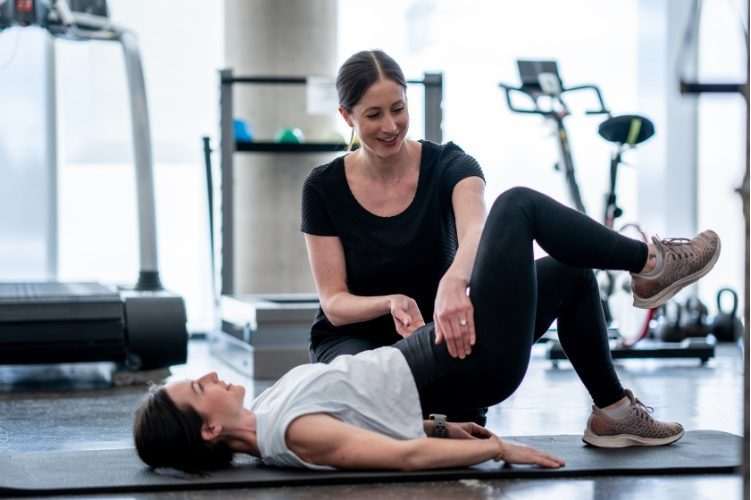Long hours on a bike can irritate the pelvic area and contribute to tight or weak pelvic floor muscles.
Short Answer: Yes. Long Answer: Let’s Talk Pressure, Posture, and Prevention.
You clip in, crush your intervals, and feel that good post-ride burn.
But later…
- Your lower back’s tight
- You’re feeling pressure “down there”
- Your bladder control isn’t what it used to be
- Or your pelvic region just feels… off
Whether you’re a road warrior, gravel rider, spin addict, or weekend commuter — cycling can absolutely affect your pelvic floor.
At YFS (Your Form Sux), we help active humans connect the dots between movement, symptoms, and the systems underneath it all — including your pelvic floor.
🧠 First, What Is the Pelvic Floor?
It’s a group of muscles at the base of your pelvis that supports:
- Your bladder and bowel
- Sexual function
- Pelvic organ support
- Core stability
- Breathing and pressure regulation
It works 24/7 — coordinating with your diaphragm, abs, glutes, and spine. So yeah, it’s kind of a big deal.
🚴 So… How Does Cycling Impact It?
1. Prolonged Pressure on the Perineum
Your perineum (the area between the sit bones) bears direct pressure on the saddle — especially in aggressive cycling postures.
🔺 For men: That pressure can compress blood flow and irritate the pudendal nerve, potentially leading to numbness or erectile dysfunction (ED).
🔺 For women: Saddle pressure can affect vaginal tissues, urethral support, and contribute to incontinence or pelvic organ prolapse, especially postpartum.
👉 This is especially true if your bike fit sucks, or you’re racking up serious saddle time without breaks or positioning awareness.
2. Core Compensation = Pelvic Floor Fatigue
Cycling is a core endurance sport — but if your deep core isn’t firing well, your pelvic floor may try to compensate to stabilize your spine. That can lead to:
- Overactivity (tight, hypertonic muscles)
- Underactivity (poor support = leaks, pressure)
- Pain or tension that builds over long rides
3. Poor Posture + Breathing Mechanics
Rounded posture on the bike can affect diaphragmatic breathing, rib mobility, and pelvic alignment — which throws off how pressure is managed in your core.
Result? Your pelvic floor gets hit with pressure from above (poor breathing) and below (saddle contact), and eventually says: “I’m out.”
🩺 Symptoms That Might Point to a Pelvic Floor Issue in Cyclists
You don’t have to feel pain to have a problem.
Watch for:
- Numbness in the saddle area
- Leaking during or after a ride
- Low back or hip tightness that won’t quit
- Genital or pelvic pain
- Heaviness or pressure in the pelvic region
- Erectile dysfunction or painful intercourse
- Difficulty fully emptying the bladder or bowels
👉 These aren’t “just part of cycling.” They’re signals that something in your system needs a reset.
✅ What Can You Do About It?
- Get a bike fit — properly adjusted saddle height, tilt, and handlebar position reduce pressure and strain
- Take saddle breaks — stand up every 10–15 minutes on long rides
- Train your off-bike core — especially deep abdominal control + breathwork
- Stretch your hips + open your chest post-ride to rebalance posture
- Book a pelvic floor assessment — we’ll look at muscle tone, strength, coordination, and how it’s all working together
Final Word: Cycling Doesn’t Have to Hurt Your Pelvic Floor
Cycling is awesome.
But that doesn’t mean your pelvic floor has to pay for it.
At YFS, we help you ride strong, stay supported, and fix any underlying imbalances — so you don’t just power through symptoms. You fix them.
Feeling pressure, leaking, or weird pelvic symptoms after cycling?
Book a pelvic floor movement assessment at YFS — and let’s keep you riding (not suffering).




